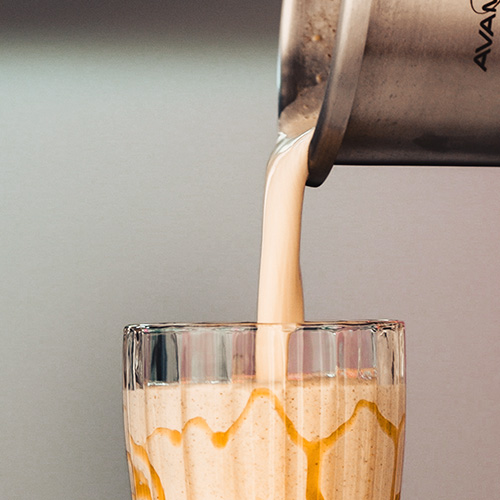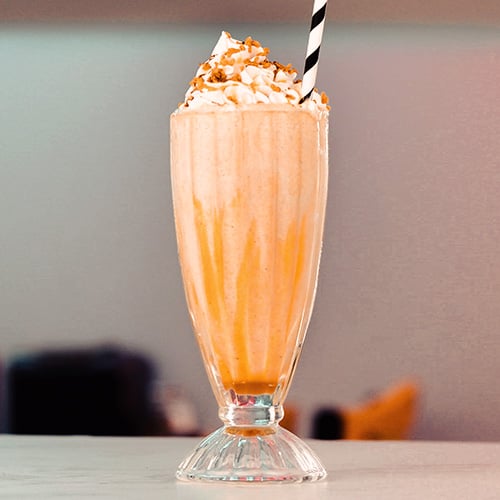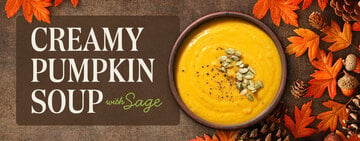During the autumn and early winter seasons, pumpkin spice is a must-have in grocery stores and coffee shops. It is commonly used in a variety of products, including lattes, pancakes, fall beers, and candles. The origins of the pumpkin spice craze are often debated, with some attributing its popularity to the infamous pumpkin spice latte. But is there pumpkin in pumpkin spice? We'll delve into the history of this beloved fall flavor and teach you how to make homemade pumpkin pie spice! Shop All Fall and Winter Flavors What Is in Pumpkin Spice? Pumpkin spice, also known as pumpkin pie spice, is a mixture of cinnamon, ginger, nutmeg, allspice, and cloves. Some pumpkin spice mixes might leave out a spice or two, but most consist of at least two or three of the spices listed above. Does Pumpkin Spice Have Pumpkin? No, pumpkin spice does not contain any pumpkin. Pumpkin spice is usually made from an assortment of spices. That being said, you can add ingredients such as pumpkin puree to your pumpkin spice mixture. The flavors of a pumpkin spice mix not only enhance the flavor of pumpkin but also that of other vegetables like sweet potatoes and squash. Pumpkin Pie Spice Substitute If you can’t find pumpkin spice or want to discover another fall flavor, consider using one of the following substitutes: Apple pie spice: Though it isn’t pumpkin spice, this spice blend allows you to add a taste of fall to your menu. Homemade spice mix: A combination of cinnamon, ginger, nutmeg, allspice, and cloves can function as a suitable pumpkin spice substitute. Consider adding a fair amount of cinnamon, as it is the dominant flavor in pumpkin pie spice. Pumpkin Spice vs Pumpkin Pie Spice Pumpkin pie spice is the same as pumpkin spice, just under different labeling. These two are interchangeable and feature the same base ingredients. The ratio of the ingredients may vary slightly from brand to brand. Pumpkin Pie Spice vs Apple Pie Spice The difference between apple pie spice and pumpkin spice comes down to a slight variation in ingredients. Apple pie spice is made of cinnamon, nutmeg, allspice, ginger, and occasionally cardamom. Pumpkin spice includes a combination of those ingredients except for cardamom, but the key difference between the two is that pumpkin spice contains cloves. Pumpkin Pie Spice Recipe If you find yourself in a pinch, you can make your own pumpkin spice blend with ingredients you may already have in your pantry. Below, we’ve provided a recipe for creating your own DIY pumpkin pie spice. Pumpkin Pie Spice Ingredients 3 Tablespoons ground cinnamon 2 teaspoons ground ginger 2 teaspoons nutmeg 1 1/2 teaspoons ground allspice 1 1/2 teaspoons ground cloves 1/2 teaspoon ground cardamom (optional) How to Make Pumpkin Pie Spice Measure cinnamon, ginger, nutmeg, allspice, and cloves and place in a small bowl. Whisk together until combined. Store in an airtight jar or container. Pumpkin Spice Foods Pumpkin spice can be used in anything from desserts to beverages. Though typically used in powder form, pumpkin spice syrup can be an easy way to incorporate this beloved flavor into your recipes. Below, we’ve included a list of foods and drinks that include pumpkin spice. Pumpkin pie Pumpkin spice latte Pumpkin chai latte Pumpkin milkshake Pumpkin-flavored coffee Pumpkin pie spice muffins, pancakes, and waffles Pumpkin maple pecan granola Ginger cookies Pumpkin spice sugar cookies Pumpkin Spice FAQ Below, we've answered some of the most commonly asked questions about pumpkin spice and pumpkin spice products: When Is Pumpkin Spice Season? Pumpkin spice is generally associated with the fall months. Many stores begin offering pumpkin spice beverages and treats towards the end of August and continue to offer them through the holiday season. When Was Pumpkin Spice Invented? Pumpkin pie spice was first introduced to consumers in 1934 by McCormick. It earned the name “pumpkin spice” because it was originally intended only for use in pumpkin pie but has since been added to a variety of different recipes. Who Invented the Pumpkin Spice Latte? The first major retailer to capitalize on the pumpkin spice phenomenon was Starbucks, led by director and project manager Peter Dukes. The Starbucks Pumpkin Spice Latte campaign launched in 2003 and became a massive success within the first few weeks. Since then, millions of pumpkin spice lattes are served each year, with variations of the drink popping up on coffee shop menus across the nation. With the hope of cooler weather, pumpkin spice flavored products are making an appearance on store shelves and drink menus. Incorporating pumpkin pie spice into your restaurant menu or home-cooked dishes is a great way to add a touch of fall to your dining experience.










